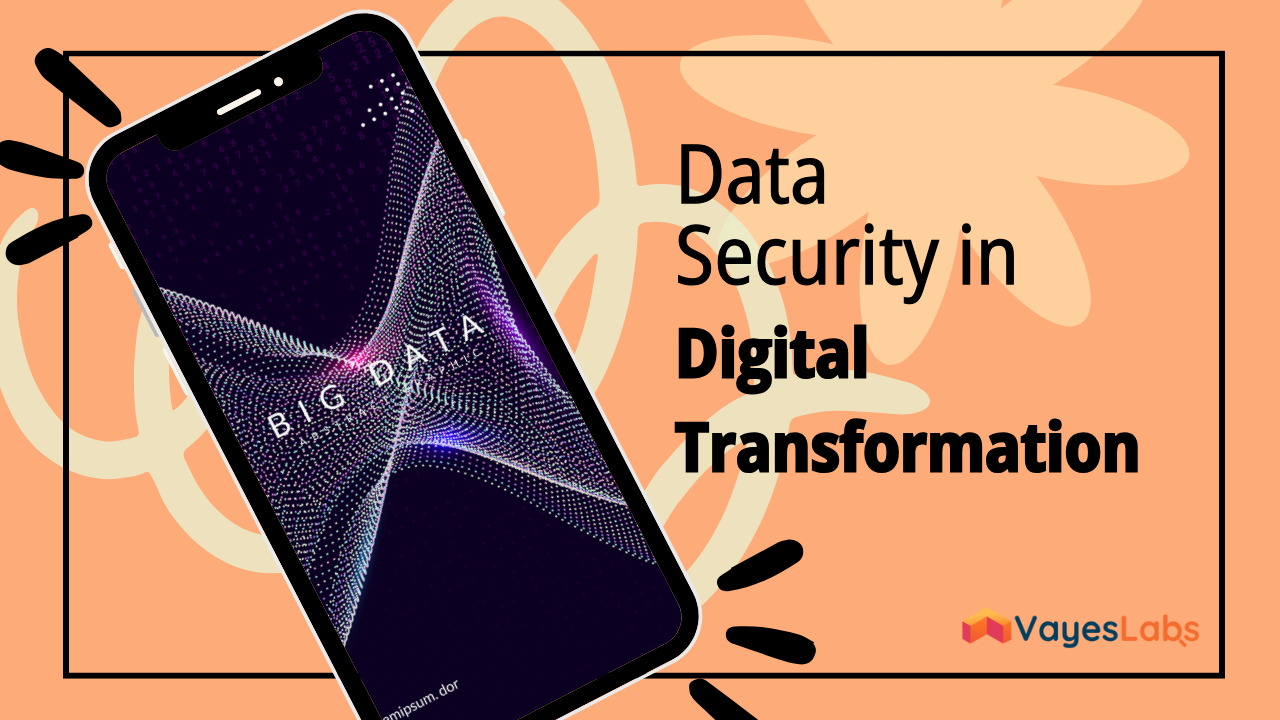Data Security in Digital Transformation
In the age of digital transformation, one of the biggest concerns of businesses and individuals is the security of data. Although rapidly developing technologies offer great opportunities to users, they also bring dangers. Therefore, creating a strong data security strategy has become more critical than ever. The transformation process requires giving importance not only to technology but also to the human factor. Unless businesses achieve this balance, protecting their digital assets will be a very challenging task.
Main Points
• Digital transformation offers great opportunities for businesses.
• Data security has become more important with technological developments.
• The human factor plays a critical role in the success of data security strategies.
The Importance of Data Security in the Digital Transformation Process
Digital transformation has become one of the most important components of today's business world. Companies aim to increase their efficiency by moving their business processes to the digital environment. However, in this process, data security is an issue that is often ignored. However, data security is of critical importance for the digital transformation process to be successful.
Key Themes of Data Security
Ensuring data security during the digital transformation process does not only mean investing in technology. Rather, there are a few key elements that should be included in security strategies. These elements should be considered both at technical and organizational dimensions. Below you can find some basic topics that increase the importance of data security:
• Strong Encryption Techniques: Data should be protected with strong encryption methods during transmission or when stored. This makes it difficult for malicious actors to access data.
• Access Controls: It is important that users only access the data they need. Thus, the risk of data leakage is minimized.
• Monitoring and Auditing: Regular monitoring and auditing of data systems allows early detection of potential security vulnerabilities.
In addition to these elements, it should not be forgotten that security awareness should also be increased during the digital transformation process. Increasing the awareness level of employees regarding data security can reduce the risks caused by human errors. It is of great importance that security policies are regularly reviewed and updated. Only in this way will it be possible to cope with current threats.
The Role of Technology
Technology plays an important role in ensuring data security. However, as much as the benefits of technology, the risks it brings should also be taken into consideration. In this context, the following elements should be taken into consideration to ensure data security during the digital transformation process:
• Cyber Security Software: Advanced software constantly protects systems against threats.
• Backup Systems: Regular backup of data minimizes losses and accelerates the recovery process in times of crisis.
• Tracking Updates: Software updates are critical to closing known security vulnerabilities.
In the digital transformation process, data security is not only a necessity but also a competitive advantage. It is inevitable for businesses to give due importance to data security in order to protect their reputation and establish customer trust. By creating a conscious approach and a strong data security strategy, businesses can achieve success in the digital age.
Challenges and Solutions in Data Security
Today, data security has become even more important with the rapid advancement of technology. Businesses, individuals and public organizations face increasing cyber threats every day. In this context, it has become a great necessity to recognize the difficulties experienced in data security and to evaluate the solutions that can be taken against these difficulties.
Identifying Challenges
One of the most common challenges in data security is cyber attacks. Weaknesses in targeted corporate systems allow attackers to gain access and steal data. In addition, human errors are another notable challenge. Lack of training or carelessness of employees can make the job of malicious people easier. In this case, taking technical measures alone may not be enough; It is also necessary to consider the human factor.
Solution Suggestions
There are several effective solutions to increase data security:
| Difficulty | Solution |
| Cyber Attacks | Using strong firewalls and up-to-date software |
| Human Errors | Providing regular training to employees |
| Data Encryption | Using strong encryption methods to ensure the security of your data |
These solutions are among the practical measures that can be taken to ensure data security. However, technical interventions alone may not be sufficient. Therefore, creating a safety culture is essential. Making all employees aware of data security and actively participating in the processes will create an important line of defense against possible threats.
Future Perspective
In the future, data security challenges are expected to become more complex. The development of technologies such as artificial intelligence and machine learning can both provide advantages for attackers and offer revolutionary innovations in defense mechanisms. In this regard, adopting proactive approaches is important to create an effective combat strategy against current threats.
Data security stands out as an issue that requires attention today. While new challenges emerge with developing technology, constant updates and training are required to counter these challenges. It should not be forgotten that the measures to be taken in data security play a major role in terms of business continuity and security.
Secure Data Management Strategies in Digital Transformation
Digital transformation shows that we are faced with an inevitable reality in today's business world. However, this transformation includes not only the renewal of the technological infrastructure but also the secure management of data. Data management has become a critical issue for businesses. Therefore, it is essential to adopt some strategies to ensure security. Now, let's explore together what these strategies are.
Creating a Strong Data Protection Policy
First of all, every business needs to determine its data protection policies. A policy created taking into account legal requirements, industry standards and best practices forms the cornerstone of secure data management. Additionally, this policy should be constantly updated and improved. Because the digital world is constantly evolving. However, just producing documents is not enough; These policies must be understood and adopted by every employee. In other words, it is important not only to have written rules but also to implement them.
Strengthening Data Encryption and Access Controls
Another important strategy is strengthening data encryption and access controls. Encryption should be used at every stage where data is stored or transmitted. In this way, data is protected against unauthorized access. Additionally, only employees who need it should have access to data. This creates a kind of defense mechanism against data loss or theft. However, it is not enough to focus only on technical measures. Providing training to employees on this issue and raising awareness is also a critical element.

Continuous Monitoring and Auditing Processes
In the digital transformation process, it is necessary not only to create secure data management strategies, but also to actively monitor these processes. Continuous monitoring enables early detection of potential vulnerabilities. Various security software and system analysis tools can be used for this. However, using these tools requires technical knowledge. Therefore, it is important that the IT team has sufficient knowledge and experience in this regard. However, installing monitoring systems alone is not enough. A mechanism to quickly respond to detected security breaches should be established.
Effective implementation of secure data management strategies during the digital transformation process is critical to the overall success of the business. It should not be forgotten that security is an existential issue and not only technology but also the human element plays an important role in this process. Taking proactive steps to achieve this is essential for the security of both businesses and users.
Cyber Threats and Methods to Ensure Data Security in Digital Transformation
The digital transformation process allows businesses to grow and gain competitive advantage. However, this process also paves the way for the emergence of new cyber threats. Cyber attacks can cause serious financial losses and data loss in both the public and private sectors. At this point, it is of great importance to develop effective methods to ensure data security.
Types of Cyber Threats
Cyber threats come in various forms. Understanding these threats is the first step in creating an effective defense strategy. The main types of cyber threats are:
• Malware: Malware is used to damage systems or steal data.
• Phishing: It is a fraud method that aims to obtain personal information by deceiving users.
• DDos Attacks: These are attacks that overload the target system and render it unusable.
Methods to Ensure Data Security
There are some methods to ensure data security during the digital transformation process. These methods are critical to countering cyber threats and protecting your data. Here are these methods:
• Encryption: Encrypting sensitive data prevents information from reaching unauthorized persons.
• Education and Awareness: Training employees on cyber security allows them to be better prepared against possible threats.
• Firewalls: Firewalls that control network traffic prevent attacks from outside.
Digital transformation is a complex process that contains both opportunities and risks. Dealing with cyber threats is possible not only with technology investments but also with education and awareness. It should not be forgotten that in order to create a secure digital environment, it is necessary to be proactive against constantly evolving threats. In this context, it is of critical importance for businesses to adopt the most effective methods to ensure data security.
In line with the information we explained above, taking the necessary steps to ensure data security in digital transformation will help you protect your business continuity. Remember, cybersecurity is not just an IT issue, it is the responsibility of an entire organization.
Best Practices and Technological Innovations for Data Security
Today, data security has become a primary concern for both individuals and institutions. The rapidly developing technological environment causes security vulnerabilities to increase. In this context, we must evaluate best practices and innovations to ensure data security in the light of our knowledge. Data is the power of the digital world and the measures to be taken to avoid losing this power are critical.
Basic Data Security Principles
The basis of data security is the confidentiality, integrity and availability of information. Strong encryption methods should be used to ensure confidentiality. This process ensures that data is protected from unauthorized access. For example, if a file is not encrypted, it may be possible for malicious people to easily access this data. Additionally, data backup should not be neglected. Unbacked data may cause irreparable damage if accidentally lost.
The Role of Emerging Technologies
Artificial intelligence and machine learning are among the technologies revolutionizing data security. These technologies provide a great advantage in detecting and prioritizing security threats. For example, thanks to machine learning, systems can identify new threats by analyzing old attack patterns. However, considering all this, relying too much on automated systems can also be dangerous. Unfortunately, these systems can also make a false determination and raise concerns about the process.
Raising Awareness of Employees
One of the most important elements for an organization to achieve its data security goals is raising employee awareness. Employees must be able to recognize situations that may be vulnerable. In particular, it is crucial for them to be wary of social engineering attacks such as phishing. However, even if training is provided, it may not always be possible to completely control the human element. So, no matter how powerful the systems are, human error will always remain a risk factor.
Future Trends
In the coming years, we will see more innovation in data security. In particular, the implementation of new methods such as quantum encryption will increase the level of data protection. However, the fact that such technologies are not yet widespread and their complex structure means that not every institution can easily integrate these innovations. That is, improving security measures should not be limited to just a technology investment; It also requires a continuous process of education and awareness.
Best practices and technological innovations for data security require, above all, a conscious approach and continuous development. As we look to the future with hope, let's never forget the importance of such practices.
Frequently Asked Questions
What is data security?
Data security is the process of protecting information and data against unauthorized access, use, disclosure, corruption or destruction.
Why is data security important?
Data security is critical to protecting your personal information, financial data and company information. Data breaches can lead to financial losses and reputational damage.
What precautions should be taken to ensure data security?
To ensure data security, precautions such as using strong passwords, providing up-to-date software, backing up data and providing security training to employees should be taken.
How should companies ensure data security?
Companies should create security policies, use up-to-date security software, conduct regular security audits, and train their employees on data security.
What should be done in case of a data breach?
In case of a data breach, a security expert should be consulted immediately, the types of affected data should be determined, necessary legal notifications should be made and the causes of the breach should be analyzed.




